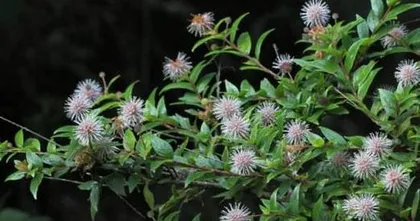Abstract:
Chinese bayberry is a highly nutritious fruit. Not only is it sweet and sour in taste, but it is also rich in various vitamins and trace elements, which are very beneficial to human health. How can you grow a bountiful harvest of Chinese bayberries? This article will introduce you to the cultivation methods and key points for caring for Chinese bayberries.

Selecting Chinese Bayberry Varieties
Choosing the right variety of Chinese bayberry is crucial. Chinese bayberries can be divided into two types based on fruit size: large-fruit and small-fruit. Generally, small-fruit varieties are more suitable for home cultivation because they grow faster, produce more fruit, and are easier to manage.
Soil and Environment for Chinese Bayberries
Chinese bayberries prefer a warm and humid environment, with the optimal growth temperature being 18°C to 28°C and a sunlight duration of over 10 hours. They also thrive in fertile, well-draining acidic soil with a pH of 4.5 to 5.5, and the soil needs to be kept moist.

Propagation Methods for Chinese Bayberries
The main propagation methods for Chinese bayberries are grafting and cuttings. Grafting is suitable for experienced growers, while cuttings are better for beginners. Regardless of the method, healthy mother trees and scions must be selected.
Planting Techniques for Chinese Bayberries
Planting techniques for Chinese bayberries include site selection, land preparation, fertilization, and transplanting. First, choose a location with plenty of sunlight, good drainage, and fertile soil. Second, prepare the land thoroughly to loosen the soil. Then, apply basal and top-dressing fertilizers and water at the right time. Finally, transplant the saplings, being careful not to damage the roots.
Pruning and Management of Chinese Bayberries
Pruning and management are key to maintaining the tree shape and ensuring a high yield. Attention should be paid to shaping branches, pruning twigs, and thinning flowers and fruits. During the seedling growth stage, it is important to regularly remove fallen fruit and unhealthy branches to ensure the tree's health.

Pest and Disease Control for Chinese Bayberries
Common pests and diseases for Chinese bayberries include aphids, powdery mildew, and black spot. Pest and disease control should address both the mechanisms of their occurrence and preventive measures. Generally, chemical pesticides or biological control methods can be used.
Harvesting and Storage of Chinese Bayberries
Chinese bayberries are generally harvested from July to August. At this time, the fruits are mature, bright red, and have a sweet and sour taste. After harvesting, they should be stored promptly. They can usually be sealed in plastic bags and stored in a well-ventilated and dry environment.
Nutritional Value of Chinese Bayberries
Chinese bayberry is a highly nutritious fruit. The elements it contains, such as vitamin C, potassium, and iron, are very beneficial to health. Regular consumption of Chinese bayberries can aid digestion, boost immunity, and lower blood lipids.
Market Prospects for Chinese Bayberries
As people pay more attention to a healthy diet, the market prospects for Chinese bayberries are improving. Currently, the cultivation scale of Chinese bayberries is continuously expanding, and the supply cannot meet the demand. The cultivation of Chinese bayberries is a very promising industry.
Cultivation Profits of Chinese Bayberries
Chinese bayberry is a high-efficiency cash crop, with potential profits of around 30,000 yuan per acre. With proper management, one Chinese bayberry tree can produce about 30 jin of fruit per year, with a selling price of 10 to 20 yuan per jin. Therefore, the prospects for cultivating Chinese bayberries are very attractive.
Common Mistakes in Chinese Bayberry Cultivation
In the process of cultivating Chinese bayberries, some growers easily make mistakes, such as over-fertilizing, not pruning in a timely manner, and uneven watering. These mistakes can affect the normal growth and fruiting of the Chinese bayberry.
Brand Building for Chinese Bayberries
Brand building is an important means to increase sales and competitiveness of Chinese bayberries. In terms of brand building, one can start with quality standards, marketing strategies, and channel development to create a unique brand image.
Technological Innovation for Chinese Bayberries
Technological innovation is key to improving the productivity and quality of Chinese bayberries. In terms of technological innovation, modern technologies such as smart agriculture and remote monitoring can be used to improve the cultivation efficiency and yield of Chinese bayberries.
Cultural Heritage of Chinese Bayberries
Chinese bayberry is not only a food but also has rich cultural connotations. In the process of planting and selling Chinese bayberries, cultural elements such as Chinese bayberry festivals and decorative items can be integrated to add color to product marketing.
This article has mainly introduced the cultivation methods and key points for caring for Chinese bayberries. Through the detailed explanation of the above aspects, I believe that readers have now gained a preliminary understanding of Chinese bayberry cultivation. For friends who want to grow Chinese bayberries, it is recommended to do more research and practice diligently. I believe you too will be able to reap a bountiful harvest in the near future.